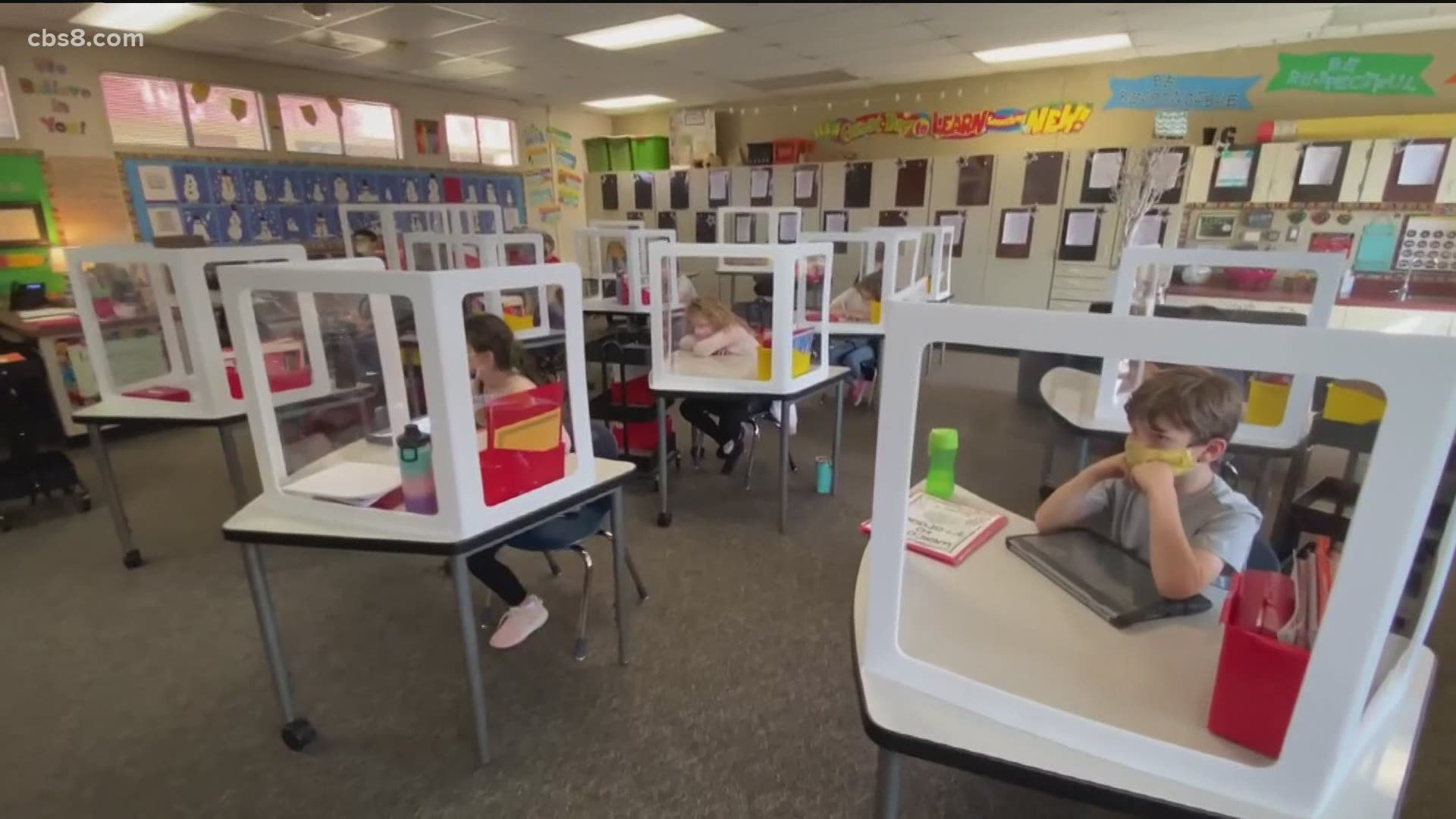SACRAMENTO COUNTY, Calif. — California Gov. Gavin Newsom and state legislative leaders have reached an agreement aimed at getting most public school children back in classrooms by the end of March. Under the deal announced Monday, school districts could receive up to $6.6 billion, with $2 billion set aside for districts that get select groups of students in classrooms by March 31.
To get the money, schools must return to in-person instruction at least through second grade. However, districts in counties with coronavirus case numbers at low enough levels must return to in-person instruction for all elementary school grades, plus one grade each in middle and high school. The proposal does not require staff and students to be vaccinated, and districts are not required to have agreements with teachers' unions.
On Monday, during a media conference, Gov. Newsom, Senate President pro Tempore Toni G. Atkins and Assembly Speaker Anthony Rendon highlighted the $6.6 billion budget package to accelerate the safe return to in-person instruction across California and empower schools to immediately expand academic, mental health and social-emotional supports, including over the summer.
“Since the height of the winter surge, we have successfully shifted the conversation from whether to reopen schools to when,” said Governor Newsom. “Now, our collective charge is to build on that momentum and local leadership, and – just as critically – do whatever it takes to meet the mental health and academic needs of our students, including over the summer.”
Newsom said public schools throughout the state will be allocated $6.6 billion under the proposed budget package. Two billion would fund safety measures to support in-person instruction, such as personal protective equipment, ventilation upgrades and COVID-19 testing and $4.6 billion would fund expanded learning opportunities, such as summer school, tutoring and mental health services.
Newsom said the funds empower schools to develop and execute comprehensive strategies to both reopen and expand programs to address the social-emotional, mental health and academic needs of students.
All public schools would be required to offer in-person instruction to grades K-2 for all students and for high-needs students in all grades by the end of the month, losing 1% of eligible funds every day thereafter if they do not. Schools in the state’s Red Tier or better would be required to offer in-person instruction to all students in all elementary grades and at least one middle or high school grade, or risk the same penalty.
Newsom said these requirements will help ensure schools begin to reopen as soon as possible, in order to build trust and confidence to continue phased reopenings. He also said as students return to in-person instruction, "all public schools would also be empowered to meet the needs of the whole child."
The governor said the Expanded Learning Opportunities Grants allocate $4.6 billion to local educational agencies based on the equity-based Local Control Funding Formula, with an additional $1,000 for each homeless student. These funds would be for supplemental instruction and support for social and emotional well-being. Schools would be able to use the funds for providing more instructional time, such as summer school, and accelerating progress to close learning gaps through tutoring, learning recovery programs, mental health services, access to school meal programs, programs to address pupil trauma and social-emotional learning and supports for credit-deficient students.
The package would also codify multiple successful state programs to support safe school reopenings:
- Vaccine Prioritization for K-12 School Staff. The package codifies the Governor’s commitment to set aside 10 percent of vaccines for education workers. This commitment ensures that the state prioritization of school staff, in place since January, is made real in all 58 counties. Since the Governor’s announcement two weeks ago, the state has collaborated with county health departments, the Biden Administration and providers such as Kaiser Permanente to accelerate vaccine access for K-12 school staff starting March 1.
- Data Reporting. The package codifies data reporting requirements, including requirements for schools to report reopening status and COVID-19 safety measures. These statutory requirements will help build on efforts to increase transparency, including interactive geospatial maps displayed on the Safe Schools Hub.
- State Safe Schools Team. The package also allocates $25 million to the State Safe Schools Team, which serves to provide technical assistance, oversight and accountability to the over 10,000 public schools in the state. The capacity will enhance the Team’s reach, and the Team will conduct a safety review of any school with two or more COVID-19 outbreaks.
The state’s efforts to accelerate safe school reopenings to date include delivery of three months of PPE and safety supplies to all schools at no cost, direct support to over 1,000 schools in 41 counties to implement COVID-19 testing and direct technical assistance to over 300 school districts.

